- Deutsch
-
EnglishDeutschItaliaFrançais日本語한국의русскийSvenskaNederlandespañolPortuguêspolskiSuomiGaeilgeSlovenskáSlovenijaČeštinaMelayuMagyarországHrvatskaDanskromânescIndonesiaΕλλάδαБългарски езикAfrikaansIsiXhosaisiZululietuviųMaoriKongeriketМонголулсO'zbekTiếng ViệtहिंदीاردوKurdîCatalàBosnaEuskeraالعربيةفارسیCorsaChicheŵaעִבְרִיתLatviešuHausaБеларусьአማርኛRepublika e ShqipërisëEesti Vabariikíslenskaမြန်မာМакедонскиLëtzebuergeschსაქართველოCambodiaPilipinoAzərbaycanພາສາລາວবাংলা ভাষারپښتوmalaɡasʲКыргыз тилиAyitiҚазақшаSamoaසිංහලภาษาไทยУкраїнаKiswahiliCрпскиGalegoनेपालीSesothoТоҷикӣTürk diliગુજરાતીಕನ್ನಡkannaḍaमराठी
Leading Semiconductor Companies to Watch in 2022
- 2024/10/17
- 7
Catalog
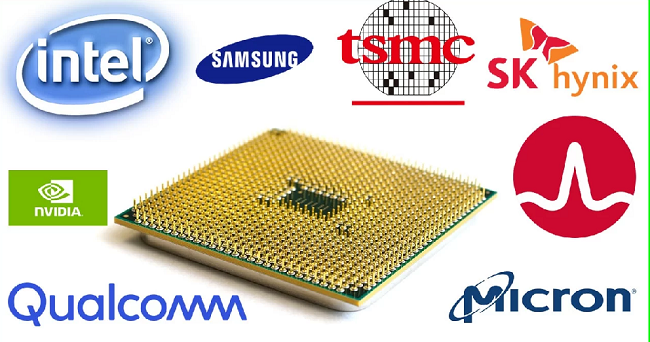
Intel
• Place of Origin: United States
• Founded: 1968
• Founder: Gordon Moore
• Website: [Intel](http://www.intel.com)
Intel was founded in 1968 and has always been a leader in technology and computing. One of the main reasons for its early success was the creation of dynamic random-access memory (DRAM) chips and required microprocessors like the Intel 4004. The Intel 4004 was a main player in the rise of personal computers, helping Intel become a major name in the tech industry.
Today, Intel is focusing on data-driven technologies, expanding into areas like artificial intelligence (AI), 5G technology, and edge computing. These areas are major for today’s digital world. For instance, AI needs powerful processing capabilities. Intel is addressing this need by investing in new technologies, which are making big changes in fields like healthcare, self-driving cars, and cybersecurity.
5G technology is another major focus for Intel. It promises faster internet speeds and better connections, which are essential primary for industries that rely on quick data processing. Meanwhile, edge computing is changing how we handle data by bringing computing resources closer to where the data is created. This reduces delays and increases efficiency, which is great for businesses that need to act quickly.
In 2020, Intel made $77.87 billion in revenue, an 8% increase from the previous year. This strong performance is due to Intel's ability to adapt to changes in the tech world. By investing a lot in research and development (R&D), Intel continues to innovate and push boundaries.
Qualcomm
• Place of origin: United States
• Founded: 1985
• Official Website: http://www.qualcomm.com/
Qualcomm, founded in 1985, is a leader in wireless technology. Known for its Snapdragon processors and RF baseband chips, the company impacts mobile devices, automotive technology, and the Internet of Things (IoT).
Snapdragon processors enhance the performance of smartphones and wearables, while RF chips ensure reliable wireless communication. In the automotive sector, Qualcomm advances connected car technology, improving safety and enabling self-driving capabilities through vehicle-to-everything (V2X) communication.
In IoT, Qualcomm's efficient chipsets support smart homes, factory automation, and healthcare solutions. Despite a 3.06% revenue decline in 2020 to $23.531 billion, this reflects market changes rather than a decrease in influence, as revenue fluctuations are typical in the tech industry.
Hisilicon
• Origin: Shenzhen, China
• Founded: 1991
• Website: Hisilicon Official Website
Hisilicon started in 1991 as part of Huawei's IC Design Center. It is a leading company that designs semiconductors without manufacturing them (fabless). The company focuses on making advanced integrated circuits, especially known for its Kirin and Kunpeng chips. These chips are required for innovations in mobile technology, communication, and artificial intelligence (AI).
The special design of these chips contributes to their high performance. Kirin and Kunpeng chips have changed the landscape of mobile communication and AI, showing significant improvements in speed, energy efficiency, and overall performance.
Kirin chips are well-known for powering high-end smartphones, giving you a smooth and fast experience thanks to their advanced technology.
These integrated circuits are found in many devices, from regular smartphones to advanced AI systems. Kunpeng processors are also basic in data centers, supporting cloud computing and big data analysis. They help businesses work more efficiently by reducing delays and improving data management.
In 2020, Huawei reported revenue of about CNY 89.14 billion, a 3.8% increase from the previous year. Their net profit also grew by 3.2%, reaching CNY 64.6 billion.
These financial results reflect both market trends and Hisilicon's strong technological development, showing how well their innovations are received in the market.
Samsung
• Place of Origin: South Korea
• Founded: 1938
• Official Website: https://www.samsung.com
Samsung, founded in 1938 in South Korea, has grown into a major company influencing various sectors, including electronics, finance, and chemicals. It is well-known for its home appliances, smartphones, and semiconductor products. The company constantly innovates and adapts to changes in technology and customer needs, allowing it to stay ahead in the consumer electronics market, specially with smartphones and TVs. Samsung also operates in finance, with Samsung Life Insurance being one of the largest insurance companies in South Korea, which helps spread risks across different industries. In the chemicals sector, Samsung produces everything from basic materials to advanced chemicals used in electronics, showcasing its integration from raw materials to finished products. During the global pandemic, Samsung reported record revenues of 66.96 trillion won in Q3 2020, rising to 73.98 trillion won (about $63 billion) in the same period in 2021, driven by increased demand for electronics as remote work and digital entertainment surged. The company invests heavily in research and development, focusing on 5G technology and artificial intelligence, which strengthens its market position and boosts revenue. Samsung’s ability to quickly adapt its supply chain and production lines to meet growing needs for home electronics and IT solutions has proven major for success in changing markets. Strong internal communication, effective remote work practices, and rapid product development further contributed to navigating uncertain times, offering valuable lessons for other companies aiming to maintain stability in fluctuating markets.
MediaTek
• Place of Origin: Taiwan, China
• Founded: 1997
• Website: https://www.mediatek.com
Founded in 1997, MediaTek is a leading semiconductor company known for its System-on-Chip (SoC) solutions used in smart TVs, voice assistants, and Android tablets.
In 2020, MediaTek earned NT$32.215 billion, a 30.8% increase from 2019, driven by rising demand for consumer electronics. The company’s strong focus on research and development helps improve its chip performance and keeps it competitive in the market.
MediaTek also partners with other industry leaders to enhance its product offerings and drive growth. Looking ahead, the company plans to expand its market reach and explore new applications, specially in 5G technology, AI, and IoT devices.
With a solid understanding of market needs and trends, MediaTek is well-positioned for future success.
NVIDIA
• Place of Origin: United States
• Founded: 1993
• Official Website: http://www.nvidia.com
Since its founding in 1993, NVIDIA has transformed graphics processing, with the launch of the programmable Graphics Processing Unit (GPU) in 1999 serving as a game-changer for video gaming, graphics, and data centers, enabling more interactive and immersive experiences. The company focuses on three main areas: Artificial Intelligence (AI), where its powerful GPUs accelerate deep learning and machine learning applications; Visual Computing, which enhances graphics performance for you with advanced GPU technology; and Data Center Solutions, providing hardware and software to handle complex tasks and large data, improving cloud services and enterprise systems. With over 1,100 US patents, NVIDIA demonstrates its strong commitment to innovation and research. In 2020, it reported $10.918 billion in revenue, a 6.81% decline from the previous year, but remains financially robust due to diverse products and steady demand. Its ongoing investments and smart acquisitions position it well for future growth in a fast-changing tech landscape.
Broadcom
• Place of Origin: United States
• Founded: 1991
• Website: https://www.broadcom.com
Since it started in 1991, Broadcom has been a leader in making semiconductors for both wired and wireless communication. The company offers a wide range of products used in many areas, from digital entertainment systems to advanced mobile devices. Broadcom has a large collection of ideas and inventions, with over 3,800 patents worldwide.
In 2020, the company made $27.45 billion, showing that it is financially strong. Its history includes important milestones like going public in 1998, which helped it gain influence in the semiconductor industry, and expanding its technology skills by acquiring CA Technologies and Symantec’s Enterprise Security Services. These targeted purchases have allowed Broadcom to combine different technologies and create better solutions across various fields. The company's commitment to innovation has been main to its success, as it has helped improve Bluetooth technology, changed Wi-Fi standards, and developed semiconductor solutions for broadband communication. This focus on new technology has strengthened Broadcom's market position and set industry standards.
However, even with its strong market position, Broadcom faces tough competition from companies like Qualcomm and Intel, which are constantly pushing for better technology. To stay ahead, Broadcom must continue to innovate and deal with challenges like patent lawsuits and fast-paced technological changes. Looking to the future, Broadcom is ready for growth by focusing on new trends like 5G technology, the Internet of Things (IoT), and advances in artificial intelligence (AI). By concentrating on these areas, Broadcom aims to create groundbreaking semiconductor solutions that could change the digital world, and its ability to understand market needs and innovate will be required for its success.
Texas Instruments
Texas Instruments (TI) was founded in 1930 and is based in the U.S. It is known for its work in analog circuits and semiconductor technology. Originally focused on geophysical systems, TI shifted to electronics, becoming a leader in the semiconductor industry.
TI played a unique role in creating the integrated circuit, which is relevant for modern electronics and has transformed computing and communication. In 2020, the company earned $14.46 billion, showing strong market presence and the ability to adapt.
TI focuses on analog technology and embedded processing, targeting growing markets like automotive, industrial, and personal electronics. In the automotive sector, TI's solutions improve vehicle safety and energy efficiency. In personal electronics, TI's technologies enhance power management and performance, required for devices like smartphones.
AMD
• Place of origin: United States
• Founded: 1969
• Website: http://www.amd.com
Advanced Micro Devices (AMD), founded in 1969 in the United States, is a main player in the semiconductor industry, renowned for its CPUs, GPUs, and innovative microprocessors. The company gained outstanding attention with its Ryzen processors, which have improved performance and efficiency for you and businesses. In 2020, AMD reported $9.76 billion in revenue and $1.37 billion in operating income, largely driven by the success of the Ryzen series. Strategic acquisitions and partnerships have enhanced AMD's technology and market position, allowing the company to collaborate with leading tech firms for cloud services and AI solutions. Additionally, AMD balances performance with energy efficiency, a focus in today's sustainability-driven world, positioning itself well for future market demands.
SK Hynix
• Place of origin: Korea
• Founded: 1983
• Official website: [http://www.skhynix.com/](http://www.skhynix.com/)
SK Hynix, founded in 1983, is a major player in the semiconductor industry, especially known for its D-RAM and NAND flash memory technologies. These components are required for modern electronics, highlighting their importance in our daily lives.
The company has a strong global presence, with factories and research centers in various countries, allowing it to adapt quickly to market trends. In 2020, SK Hynix reported nearly 32 trillion won in revenue, reflecting its solid market position and production capabilities.
As the semiconductor industry evolves, ongoing innovation is a must. With the rise of technologies like AI, IoT, and data analytics, companies like SK Hynix are outstanding in shaping the future of technology by investing heavily in research and development.
Conclusion
Semiconductor industry has experienced remarkable growth since its inception around 1960, driven by innovations like the transistor, and is relevant to modern technology, with revenues exceeding $481 billion in 2018. Analyzing the top semiconductor companies in 2022 Intel, Qualcomm, Hisilicon, Samsung, MediaTek, NVIDIA, Broadcom, Texas Instruments, AMD, and SK Hynix reveals their leadership and innovation, as each company plays a role in advancing technologies such as artificial intelligence, 5G, and the Internet of Things. Moving forward, a strong commitment to research and development, adaptability to market changes, and collaboration will be required for these companies to maintain their competitive edge and drive further technological advancements, with the lessons learned from these leaders influencing the next generation of semiconductor innovations.
Frequently Asked Questions [FAQ]
1. What is the best semiconductor company?
Top semiconductor companies to invest in for 2022 include:
• ASML Holding N.V - Known for advanced lithography systems.
• KLA Corporation - Focuses on process control in manufacturing.
• Broadcom Inc - Offers a wide range of communication semiconductors.
• NXP Semiconductors N.V - Specializes in automotive and IoT solutions.
• Micron Technology - Leader in memory and storage products.
2. Who is leading the semiconductor industry?
Intel and Samsung are the top players in the semiconductor industry. In 2020, Intel led with about $73.89 billion in sales, while Samsung followed with around $60.48 billion.
Verwandter Blog
-
Verständnis des C1815 -Transistors: Pinouts, Schaltungssymbole, Anwendungsschaltungen
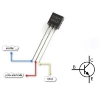
2023/12/20
Welche Art von Röhre ist der C1815?C1815 Triode PinoutC1815 ModellzeichnungC1815 -ParameterC1815 EigenschaftenAnwendung von C1815 Der C1815 -Transist... -
Ein Überblick über TTL- und CMOS -ICs und wie Sie zwischen ihnen wählen

2024/04/13
In diesem Artikel werfen wir einen detaillierten Blick auf zwei wichtige elektronische Technologien, komplementäre Metaloxid-Halbleiter (CMOS) und Tr... -
Netzteilspannung Abkürzung: VCC VDD VEE VSS GND
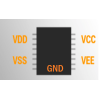
2024/06/6
Im modernen elektronischen Schaltungsdesign, Verständnis der Abkürzungen der Stromversorgungsspannung (wie VCC, VDD, VEE, VSS, GND).Diese Abkürzung... -
LR44 -Batterien: LR44 -Batterieäquivalente und LR44 -Batterieersatz

2024/01/24
In einem sich schnell entwickelnden technologischen Gebiet, in dem die Größe der elektronischen Geräte weiter schrumpfen und dennoch alltäglicher ... -
Verschiedene Arten von Sicherungen und Anwendungen

2024/04/18
Sicherungen sind wesentliche Komponenten in modernen elektrischen Systemen und fungieren als entscheidende Beschützer vor Überstrom.Sie arbeiten, in... -
Beschreiben Sie kurz die Spezifikationen, Verpackungen, das Arbeitsprinzip, die Vorteile und die Umweltauswirkungen von Lithium-Ionen-Batterien
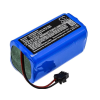
2024/03/20
Seit der Einführung von wiederaufladbaren Blei-Säure-Batterien im Jahr 1859 wurden sie allmählich in den Gewebe des technologischen Fortschritts ei... -
Leitfaden zu Buck-, Boost- und Buck-Boost-Konverter
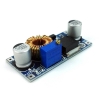
2023/12/21
Was ist ein Buck -Konverter?Wie funktioniert ein Buck Converter?Was ist ein Boost -Konverter?Wie funktioniert ein Boost -Konverter?Was ist ein Auftrie... -
Grundkenntnisse über Sicherungen: Merkmale, Arbeitsprinzipien, Typen und wie man richtig auswählt

2024/04/10
Sicherungen schützen Schaltungen vor Schäden aufgrund von Überlastung oder Kurzstrecken.Dieses einfache, aber geniale Gerät basiert auf einem leic... -
Transistor (BJT und MOSFET) Arbeitsprinzipien

2023/12/20
Arbeitsprinzip des bipolaren Junction -Transistors (BJT)Auswahl der KomponentenwerteWie wählen Sie einen Transistor?Arbeitsprinzip von MOSFETWie scha... -
Beherrschen analoge und digitale Schaltungen: Ein Anfängerführer
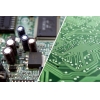
2023/12/20
Definition und Eigenschaften von analogen Schaltungen und digitalen SchaltungenDer Unterschied zwischen analogen Schaltungen und digitalen Schaltungen... -
Eine vollständige Liste von Testmethoden für verschiedene Transistoren

2023/12/20
Der Transistor wurde von John Bardeen, William Shockley und Walter Brattain erfunden.Es handelt sich um ein Kollektor-, Emitter- und Basis-Drei-termin... -
Transistor umfassender Leitfaden

2023/12/20
1. Was ist ein Transistor?2. Wie funktioniert ein Transistor?3. Vorteile von Transistoren4. Arten von Transistoren5.faq 1. Was ist ein Transistor? Ein... -
Grunde elektronische Grundkomponenten verstehen - Widerstände, Kondensatoren, Dioden, Transistoren, Induktoren und digitale Logik -Tore
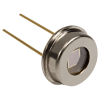
2024/04/13
Elektronische Komponenten sind der Eckpfeiler des Bauens und der Optimierung elektronischer Schaltkreise.Von gewöhnlichen Haushaltsgeräten bis hin z...
